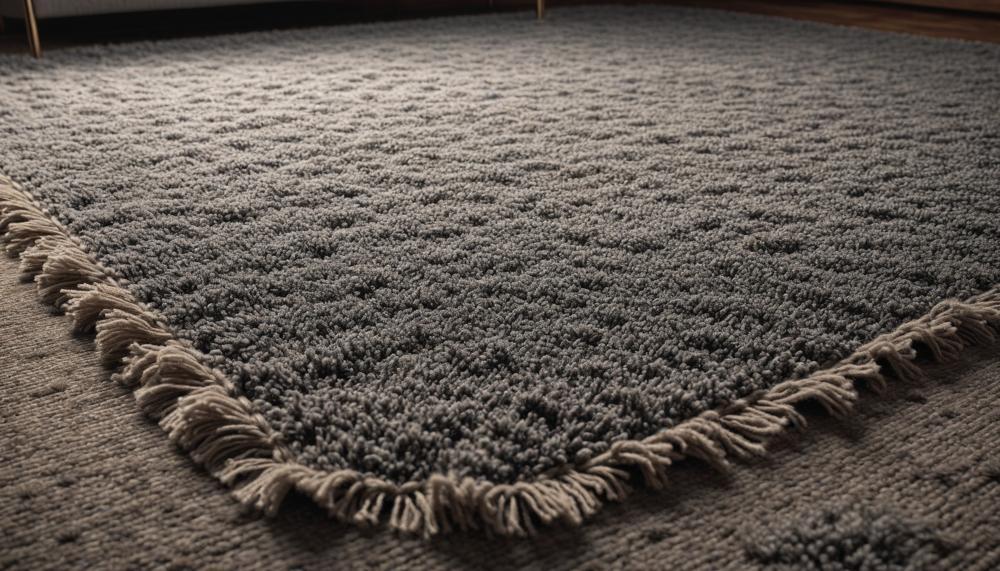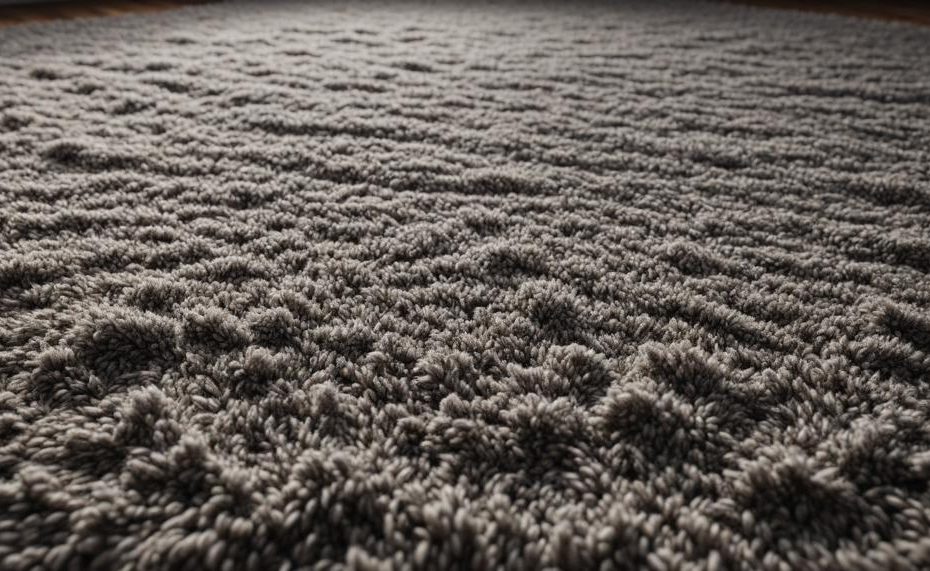Frayed carpet edges in doorways can be a real eyesore, not to mention a trip hazard. Luckily, with a few simple steps, you can repair these frayed edges and restore your carpet to its former glory. Here’s how you can tackle this common household issue without needing to replace your entire carpet.
Key Takeaways:
- Trim an inch off the damaged edge using a box cutter.
- Attach cotton binding tape to the trimmed edge and fold it inward.
- Secure the binding with cross-stitching to complete the repair.
- Focus on the first inch of fraying; that’s typically all you need to address.
By following these straightforward steps, you’ll have neat, secure carpet edges in no time, making your home safer and more aesthetically pleasing. Ready to get started? Let’s dive into the details of each step and fix that frayed carpet today.
Contents
Why Is My Carpet Fraying At The Door Threshold?
Carpet fraying at the door threshold is a common issue, often resulting from several factors that contribute to the wear and tear of the carpet.
Understanding the causes and implementing effective solutions can help maintain your carpet’s longevity and aesthetic appeal.
| Possible Causes | Prevention and Fixes |
| Constant Foot Traffic |
|
| Movement of Furniture |
|
| Improper Installation |
|
| Exposure to Moisture |
|
How to Fix Frayed Carpet Edges
Trim the Frayed Edges:
Use a carpet knife to carefully trim away the frayed fibres. Remove any nails or staples from the old threshold that could cause further damage.
Apply Carpet Binding Tape:
Attach cotton binding tape to the trimmed edge. Fold it inward to secure the edge.
Secure with Stitching:
Use cross-stitching to secure the binding tape to the existing carpet. This will reinforce the edge and prevent further fraying.
Seek Professional Help for Extensive Damage:
If the frayed area is large or widespread, it may be best to consult a professional for repair. This can prevent further damage and potential replacement costs.
By addressing frayed edges promptly and using preventative measures, you can extend the life of your carpet and maintain its appearance.
How Do I Fix My Fraying Carpet?
To fix a frayed carpet in a doorway, follow these steps:
- Trim the Frayed Edge: Use a box cutter to carefully trim about an inch off the frayed edge of the carpet. This will remove the damaged part and give you a clean edge to work with.
- Attach Cotton Binding Tape: Secure cotton binding tape to the newly trimmed edge, ensuring that 2-3 inches of the tape extends beyond the edge. This tape will help reinforce the carpet edge and prevent further fraying.
- Fold and Stitch the Binding: Fold the extended binding tape inward and cross-stitch it onto the existing carpet. This stitching should be tight and secure to hold the binding in place and blend seamlessly with the carpet.
Finding The Right Transition Strips
When choosing transition strips for doorways, it’s essential to consider both the type of flooring and the specific needs of the space. Here’s a comprehensive guide to the types of transition strips available and how to select the appropriate one for your doorway.
Safety Considerations:
- Ensure the strip is clearly visible to avoid tripping hazards.
- Choose a strip that provides a smooth, secure walking surface.
Aesthetic Match:
- Select a transition strip that complements the colour and style of both flooring types.
- For a cohesive look, consider materials like genuine hardwood or aluminium, which can be stained or painted to match your floors.
Height Differences:
- Assess the height difference between the two floors. Use reducers or hard surface reducers for significant height variations.
- For floors of the same height, T-bars or 4-in-1 strips are ideal.
Material:
- Match the material of the transition strip with your flooring. For example, use wood strips with hardwood floors and metal strips with tile or laminate.
- Consider the durability of the material, especially in high-traffic areas.
Installation Method:
- Different strips have various installation methods such as snapping into place, gluing, or using a mounting rail.
- Ensure you have the necessary tools and skills for the chosen installation method.
How To Keep Carpet Edges From Fraying

To prevent carpet edges from fraying in doorways, employ the following measures:
| Preventative Measure | Description | Additional Tips |
| Carpet Edge Trim | Use metal or plastic trims to cover carpet edges. | Choose a trim that matches your decor. |
| Carpet Adhesive | Apply adhesive along the carpet edges to secure fibers. | Ensure the adhesive is carpet-specific for durability. |
| High-Quality Carpets | Opt for carpets with tight weaves and strong fibers. | Materials like nylon or wool are preferable. |
| Rug Tape | Use double-sided tape to keep small rugs in place. | Prevents rugs from shifting and fraying. |
| Regular Maintenance | Vacuum and clean spills promptly. | Maintains the integrity of carpet fibers. |
By implementing these strategies, you can significantly extend the life of your carpets and maintain their pristine appearance.
Conclusion
Repairing frayed carpet edges in doorways is a straightforward task that can significantly enhance your home’s appearance and safety. By following a few essential steps, you can effectively mend the frayed edges and prevent further damage.
Start by trimming the damaged edge with a box cutter to remove the frayed fibers. This gives you a clean surface to work with. Next, attach cotton binding tape to the trimmed edge and fold it inward, securing it with cross-stitching. This ensures the edge is firmly reinforced and prevents future fraying.
Regular maintenance is key to preventing carpet fraying. High-quality carpets and protective measures, like using durable mats in high-traffic areas, can extend the life of your carpet. For severe damage, professional help might be necessary to avoid further complications.
By addressing these issues promptly and using preventive measures, you can maintain your carpet’s longevity and keep your home looking its best.





